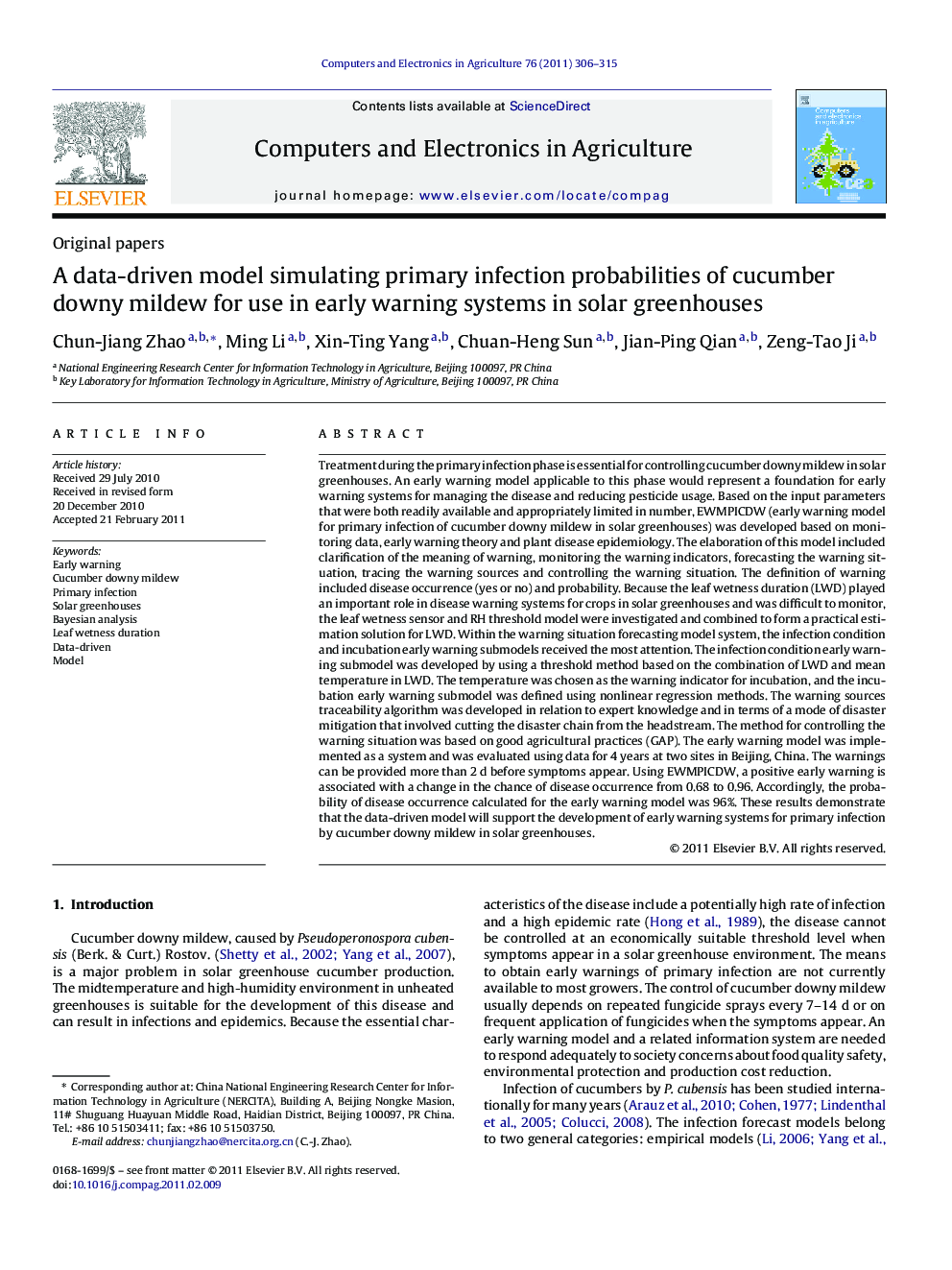| کد مقاله | کد نشریه | سال انتشار | مقاله انگلیسی | نسخه تمام متن |
|---|---|---|---|---|
| 84657 | 158895 | 2011 | 10 صفحه PDF | دانلود رایگان |

Treatment during the primary infection phase is essential for controlling cucumber downy mildew in solar greenhouses. An early warning model applicable to this phase would represent a foundation for early warning systems for managing the disease and reducing pesticide usage. Based on the input parameters that were both readily available and appropriately limited in number, EWMPICDW (early warning model for primary infection of cucumber downy mildew in solar greenhouses) was developed based on monitoring data, early warning theory and plant disease epidemiology. The elaboration of this model included clarification of the meaning of warning, monitoring the warning indicators, forecasting the warning situation, tracing the warning sources and controlling the warning situation. The definition of warning included disease occurrence (yes or no) and probability. Because the leaf wetness duration (LWD) played an important role in disease warning systems for crops in solar greenhouses and was difficult to monitor, the leaf wetness sensor and RH threshold model were investigated and combined to form a practical estimation solution for LWD. Within the warning situation forecasting model system, the infection condition and incubation early warning submodels received the most attention. The infection condition early warning submodel was developed by using a threshold method based on the combination of LWD and mean temperature in LWD. The temperature was chosen as the warning indicator for incubation, and the incubation early warning submodel was defined using nonlinear regression methods. The warning sources traceability algorithm was developed in relation to expert knowledge and in terms of a mode of disaster mitigation that involved cutting the disaster chain from the headstream. The method for controlling the warning situation was based on good agricultural practices (GAP). The early warning model was implemented as a system and was evaluated using data for 4 years at two sites in Beijing, China. The warnings can be provided more than 2 d before symptoms appear. Using EWMPICDW, a positive early warning is associated with a change in the chance of disease occurrence from 0.68 to 0.96. Accordingly, the probability of disease occurrence calculated for the early warning model was 96%. These results demonstrate that the data-driven model will support the development of early warning systems for primary infection by cucumber downy mildew in solar greenhouses.
► The model is the foundation of disease early warning systems.
► The sensors and model were used to measure leaf wetness duration for disease warning.
► The input parameters of model were readily available and appropriately limited in number.
► The warnings could be provided more than 2 d before the symptoms appeared.
► The predicted probability for disease occurrence using the early warning model was 96%.
Journal: Computers and Electronics in Agriculture - Volume 76, Issue 2, May 2011, Pages 306–315